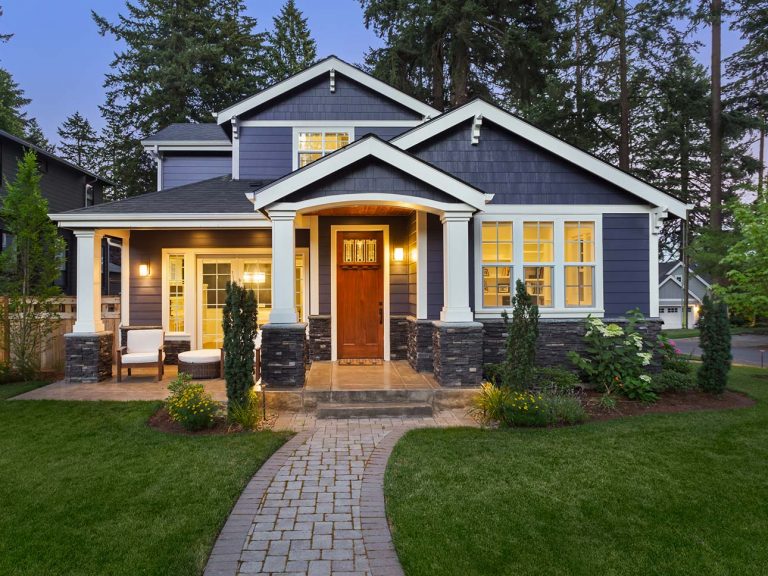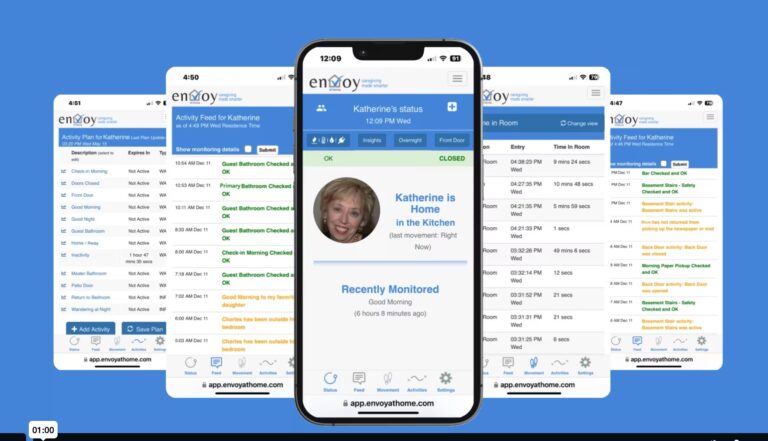It’s an uncomfortable truth – many families find themselves woefully unprepared, both emotionally and financially, for the long term care of elderly loved ones. In their groundbreaking article in the Wall Street Journal entitled “The Crushing Financial Burden of Aging at Home“, authors Clare Ansberry and Anne Tergesen follow several families as they make agonizing financial decisions – mortgaging homes, becoming unpaid caregivers, sacrificing careers – to keep their loved ones aging at home. For some, there is no other choice. For others, it’s a choice born of love and commitment.
Waiting too long to figure out how to pay for care can be financially devastating. However, if your loved one is mostly independent or at the very beginning of an aging journey, you have care options like elderly monitoring. An elderly monitor is a lower cost family caregiver support that can help push expensive solutions like full time paid caregivers or institutional care years into the future, making a limited budget last longer.
Aging at Home Is the Overwhelming Preference
According to AARP, 77% of people surveyed say they prefer to age in their own home for as long as possible. This preference stems from a desire for familiarity and comfort, as one’s home is often filled with cherished memories and a sense of independence. The thought of leaving behind a lifetime of possessions and the environment they have grown accustomed to can be deeply unsettling for many seniors. Additionally, aging at home allows older adults to maintain their routines and social connections within their community, which are vital for their emotional and mental well-being. The familiarity of their surroundings can also help reduce feelings of confusion and anxiety, especially for those experiencing early stages of memory loss or dementia.
This strong preference for aging in place underscores the need for solutions that can safely support elderly individuals in their own homes.
The High Cost of Paid Caregivers and Assisted Living
As life expectancy continues to rise, more families find themselves grappling with the challenge of ensuring quality care for their aging loved ones. The financial burden of hiring paid caregivers or moving a family member into assisted living can be overwhelming.
Many families are shocked to learn that Medicare doesn’t pay for routine senior care for its beneficiaries. Long term care insurance, unless purchased while a person is young and healthy, is out of reach.
Just how expensive is senior care?
A recent Genworth study reveals that the cost of older adult care at home continues to skyrocket well beyond the reach of middle class families. In 2023, the median cost for a home health aide was $33 per hour, or over $100,000 per year. Assisted living, where services like medication management, PT, and periodic well-being check-ins are typically not even included in the monthly fee, carries a median cost of almost $5,500 per month. For most families, these expenses are well beyond what they can afford.
How can families make their money last, so that loved ones can age in their own homes longer?
Utilizing Technology to Defer More Costly Care Solutions
Gary and Sarah (names changed to protect their privacy) faced such a challenge. Sarah’s father James, now in his 70’s, had retired to a small condo about 15 minutes away from the nearest family. On a fixed income with a small nest egg set aside for emergencies, he had been living independently when Sarah noticed his changing behavior. Showing signs of typical age-related memory loss like forgetting his keys and meds, Sarah knew it was time to get him some help at home.
Asking him to leave his home was out of the question. Sarah considered the cost of a home health aide at $350 per day. At this rate, her father would surely outlive his nest egg. Part time paid caregivers were capable and met his immediate needs, but practically dictated that he still had memory issues after the caregivers left for the day. How would she know he was safe and well at night?
This is where elderly monitoring entered her calculus. Sarah placed the envoyatHome remote elderly monitoring system in James’ home, which gave her the confidence she needed to thoughtfully add only part time home health aide support. As the years progressed and the elderly monitor’s insights made it clear that he needed more help, Sarah eventually transitioned to full time care for her father.
She preserved over $300,000 of her father’s nest egg by using a remote monitor supplemented with part time paid care, essentially deferring full time care by two years.
How an Elderly Monitor from envoyatHome Works
envoyatHome’s elderly monitor offers a discreet and comprehensive solution for families seeking to support their loved ones’ desire to age in place. The system employs silent, almost invisible sensors placed throughout the home to monitor for risky behaviors, ensuring that seniors maintain their routines while alerting caregivers to any deviations that may indicate potential issues like a fall, leaving home unexpectedly, or even behavioral symptoms of wellness issues.
The envoyatHome home elderly monitoring system tracks behavior, which is very different from tracking location in the home. When unexpected behaviors or emergencies are detected, the system sends real-time alerts to designated family members or caregivers, allowing for immediate intervention if necessary.
With no cameras or listening devices that older adults find objectionable, envoyatHome not only respects, but protects the privacy of loved ones. For older adults on a cognitive journey where bracelets and pendants are easily left behind or in many cases, never activated in an emergency, envoyatHome offers a wall to wall layer of protection that doesn’t depend on the cognition of an overwhelmed, injured, or frightened accident victim.
An elderly monitor keeps family members informed and engaged, even from a distance. By leveraging this technology, families can extend the period during which their elderly loved ones can live independently, thus deferring the need for more costly care solutions. This not only helps to preserve financial resources but also provides peace of mind for caregivers, knowing that their loved ones are safe and well.
Providing Peace of Mind for Family Caregivers
Not all elderly monitors are focused on behavior. The difference between envoyatHome and other remote elderly monitoring systems is its ability to report behavior that has clinical relevance. envoyatHome caregivers share behavior data with their loved ones’ physicians, where unobserved changes in behaviors like bathroom visit frequency and duration, elopement, wandering, pacing, confusion, sleep disruption and more lead to diagnoses and treatments that help improve health.
How do caregivers get affordable peace of mind? Peace of mind comes from knowing that you’re giving the right amount of care for a loved one’s needs. For only $3 a day, envoyatHome can help stretch the care budget, giving older adults aging at home and the families who love them more years together with less worry about how to pay for it. When a caregiver can’t be there themselves, they need an “envoy at home.”
Learn more at www.envoyatHome.com today.



